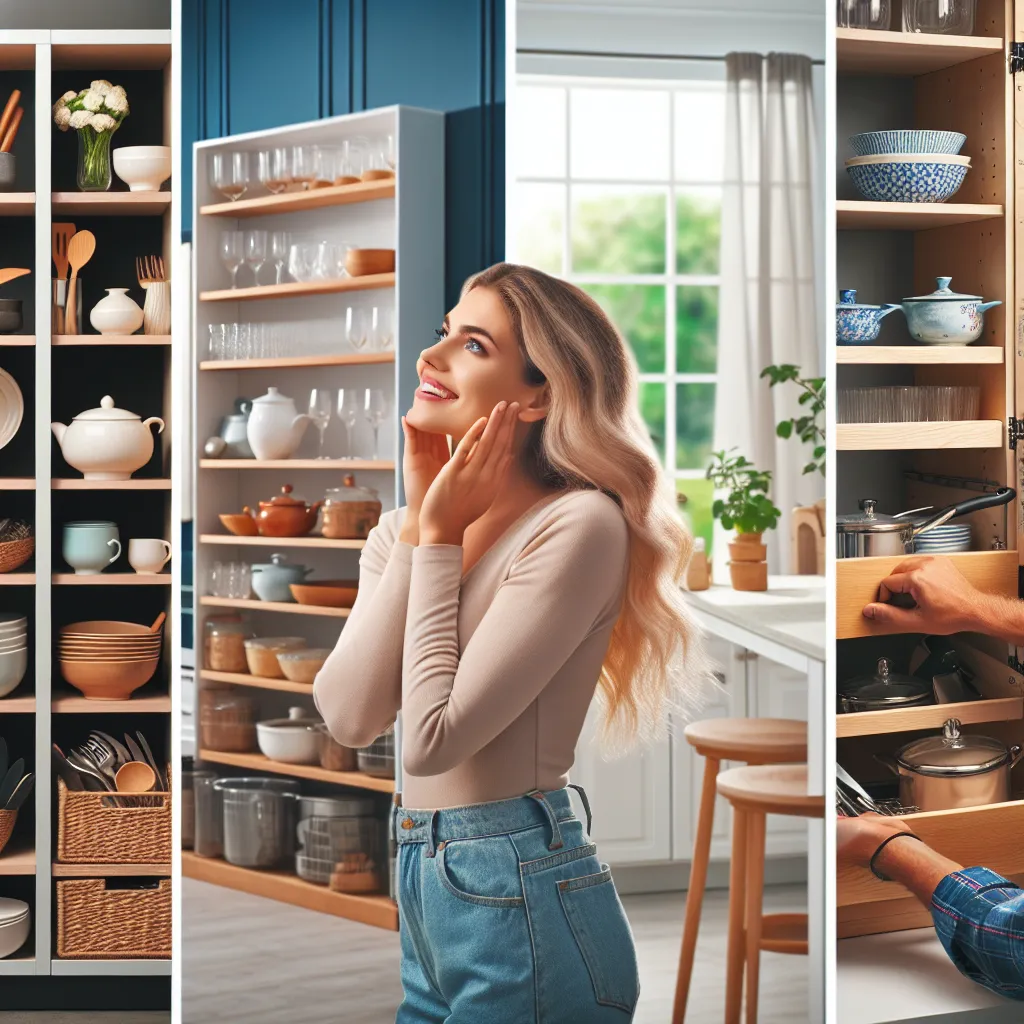The Ultimate Guide to Kitchen Cabinets: Transforming Your Cooking Space
The Ultimate Guide to Kitchen Cabinets: Transforming Your Cooking Space
When it comes to kitchen design, one of the most important elements to consider is the kitchen cabinets. Not only do kitchen cabinets provide ample storage space, but they also play a crucial role in defining the overall aesthetic of your cooking space. In this comprehensive guide, we will explore everything you need to know about kitchen cabinets, from choosing the right material and style to maximizing storage and organization. Whether you are planning a kitchen remodel or simply looking to refresh your current cabinets, this guide will help you transform your kitchen into a functional and stylish masterpiece.
1. Understanding Kitchen Cabinet Materials
The first step in selecting the perfect kitchen cabinets for your space is understanding the different materials available. Here are some popular options:
-
Wood:
Wood is a classic choice for kitchen cabinets, offering a timeless and warm look. Common wood types used include maple, oak, cherry, and hickory. -
Laminate:
Laminate cabinets are made of synthetic materials and offer a wide array of color and pattern options. They are known for their durability and easy maintenance. -
Thermofoil:
Thermofoil cabinets are made of medium-density fiberboard (MDF) covered with a layer of vinyl. They are known for their sleek and seamless appearance. -
Stainless Steel:
Stainless steel cabinets are a modern and minimalist option, often chosen for their durability and hygienic properties. -
Glass:
Glass cabinets can add a touch of elegance and allow for display of decorative items or dishware. They are available in various styles, including clear, frosted, or textured glass.
2. Choosing the Right Cabinet Style
Once you have chosen the material for your kitchen cabinets, it’s time to consider the style that best suits your taste and the overall theme of your kitchen. Here are some popular cabinet styles:
-
Traditional:
Traditional cabinets often feature intricate details, such as raised panel doors, decorative moldings, and ornate hardware. They are a popular choice for those seeking a timeless and elegant look. -
Modern:
Modern cabinets are characterized by their sleek and streamlined design, often featuring flat-panel doors, minimal ornamentation, and handleless options. -
Transitional:
Transitional cabinets combine elements of both traditional and modern styles, offering a balanced and versatile look. They often feature a mix of materials, such as wood and glass. -
Rustic:
Rustic cabinets have a charming and cozy appeal, often featuring distressed finishes, natural wood grains, and decorative accents.
3. Maximizing Storage and Organization
Effective storage and organization are essential for a functional and clutter-free kitchen. Here are some tips to maximize your cabinet space:
-
Utilize Vertical Space:
Install tall cabinets or add shelves to make use of the vertical space in your kitchen. -
Optimize Cabinet Interiors:
Use adjustable shelves, dividers, and pull-out trays to customize the interior of your cabinets and maximize storage efficiency. -
Invest in Drawer Organizers:
Drawer organizers are great for storing utensils, cutlery, and small kitchen gadgets. They help keep everything in its place and make it easier to find what you need. -
Install Pull-Out Racks:
Pull-out racks are perfect for storing pots, pans, and lids. They allow easy access and prevent items from getting lost at the back of the cabinet. -
Consider Corner Solutions:
Corner cabinets can be challenging to access, but there are various solutions available, such as lazy susans, swing-out shelves, or pull-out drawers.
4. Cabinet Maintenance and Care
To ensure that your kitchen cabinets remain in top condition for years to come, proper maintenance and care are crucial. Here are some tips:
-
Regular Cleaning:
Wipe down your cabinets regularly with a soft cloth and mild detergent to remove any dirt or grease buildup. -
Avoid Harsh Chemicals:
Harsh cleaning agents can damage the finish of your cabinets. Stick to mild cleaners and avoid abrasive sponges or scouring pads. -
Prevent Water Damage:
Be cautious when using water near your cabinets, especially around the sink area. Wipe up any spills promptly to prevent water damage. -
Handle with Care:
Avoid slamming cabinet doors or drawers, as this can cause damage over time. Use soft-close hinges and drawer glides for added protection. -
Regular Inspections:
Check your cabinets regularly for any signs of wear or damage. Addressing minor issues promptly can prevent them from turning into major problems.
Conclusion
Choosing the right kitchen cabinets is essential for creating a functional and visually appealing cooking space. By understanding the different materials, selecting the appropriate style, maximizing storage and organization, and maintaining your cabinets properly, you can transform your kitchen into a beautiful and efficient area. Remember to consider your personal preferences, lifestyle, and budget when making decisions about your kitchen cabinets. With the right choices, your cabinets will not only serve their purpose but also become a centerpiece that enhances the overall ambiance of your kitchen.

